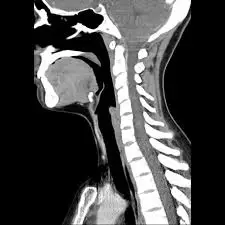How to interpret neck CT Scans: 3 Essential Methods
A neck CT scan is a powerful imaging technique using X-rays to create detailed cross-sectional pictures of your neck. This guide will help you understand what a neck CT scan can show, why it's used, and how to interpret its findings.
What is a Neck CT Scan?
A neck CT scan, or computed tomography scan, is a non-invasive procedure that provides detailed images of your neck's bones, soft tissues, and blood vessels. It’s particularly useful for examining structures not easily seen with regular X-rays.

What Can a Neck CT Scan Show?
- Bone Detail: Clear images of the cervical vertebrae, showing fractures, dislocations, and other bone abnormalities.
- Soft Tissues: Visualization of the muscles, lymph nodes, thyroid gland, and other soft tissues in the neck.
- Blood Vessels: Detailed examination of the major arteries and veins in the neck, highlighting any blockages or abnormalities.
- Tumor Detection: Helps in detecting tumors or abnormal growths in the neck region.
- Infection and Inflammation: Can identify areas of infection or inflammation.
Why Might You Need a Neck CT Scan?
- Neck Pain or Injury: To diagnose the cause of neck pain, especially after an injury.
- Suspected Fractures: To evaluate bone injuries and dislocations in the neck.
- Swelling or Masses: To assess the nature and extent of neck masses or swelling.
- Vascular Problems: When there is a concern about blood flow issues in the neck.
- Pre-Operative Planning: To prepare for surgeries in the neck region.
How to Interpret Neck CT Scan Results
Understanding your neck CT results can be crucial for managing your health. Here are some helpful approaches to interpret your results.
1. Utilizing X-ray Interpreter
X-ray Interpreter uses AI to analyze medical images, including neck CT scans. Here’s how to use it:
- Registration: Sign up at X-ray Interpreter to access the AI analysis.
- Uploading Scans: Upload your neck CT scan images to the platform.
- AI Interpretation: Receive a detailed report of findings from our AI.
- Professional Consultation: Always follow up with a physician for comprehensive diagnosis and treatment.
Explore our get started guide for more details.
2. Using ChatGPT Plus
ChatGPT Plus, powered by GPT-4V, can also help in interpreting CT scans:
- Subscription: Subscribe to ChatGPT Plus for access to advanced AI capabilities.
- Scan Upload: Upload your neck CT images to the OpenAI platform.
- Analysis Request: Ask the AI to analyze and provide an interpretation.
- Review and Consult: Review the report and get it validated by a medical expert.
Read our blog on using ChatGPT Plus for medical image analysis.
Alternatively, as several other AI models with vision capabilities emerge, you can also try other models, such as Grok by xAI, Claude by Anthropic, Gemini by Google Deepmind.
3. Basic Self Understanding
While not a replacement for a professional, you can get a better understanding of your results:
- Basic Anatomy: Study the basic anatomy of the neck to better understand the structures.
- Online Resources: Use online guides to understand basic interpretations.
- Ask Questions: Prepare specific questions for your doctor.
- Professional Review: Always confirm findings with a healthcare expert.
Comparing the Different Approaches
Here’s a comparison of methods for interpreting neck CT scans:
| Criteria | X-ray Interpreter | ChatGPT Plus | Self-Reading |
|---|---|---|---|
| Accuracy | High (AI-based)1 | High (AI-based)1 | Varies (Skill-dependent) |
| Ease of Use | Easy | Moderate | Challenging |
| Cost | Starting from $2.50 per image | $20 per month | Free (excluding educational costs) |
| Time Efficiency | Fast | Moderate to Fast | Slow to Moderate |
| Learning Curve | Low | Low to Moderate | High |
| Additional Resources | Provided | Partially Provided (through OpenAI) | Self-sourced |
Each method offers unique benefits. AI-driven options provide fast and accurate results, while basic understanding helps in more informed discussions with your physician.
Conclusion
Neck CT scans are crucial for diagnosing various neck conditions. This guide has detailed how these scans work, their uses, and how you can interpret the findings through AI tools or basic understanding.
Choosing an interpretation method depends on your situation. Always prioritize validation by a medical professional.
Related Articles
- How To Interpret Head CT Scans
- How To Interpret Neck X-rays
- How To Interpret Cervical Spine MRI
- How To Interpret Thyroid Ultrasounds